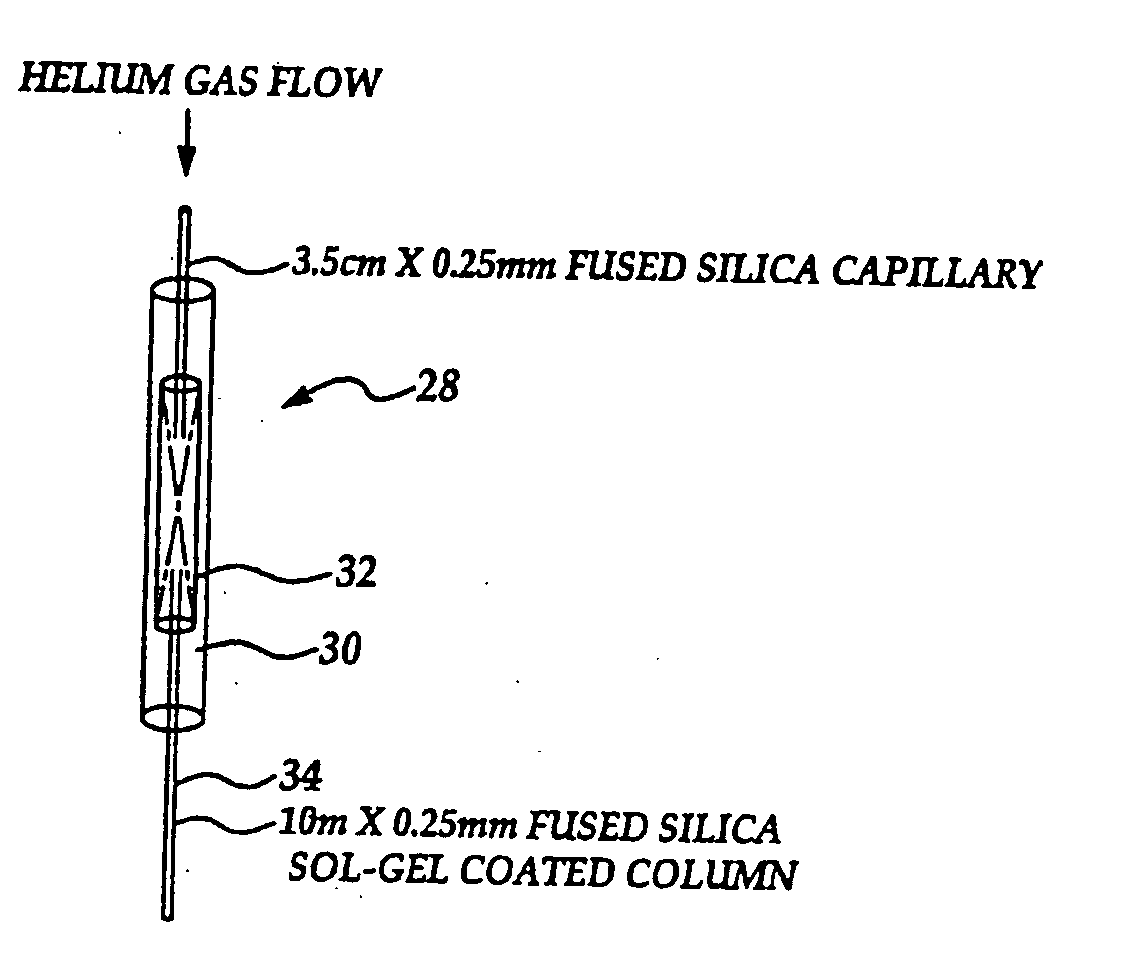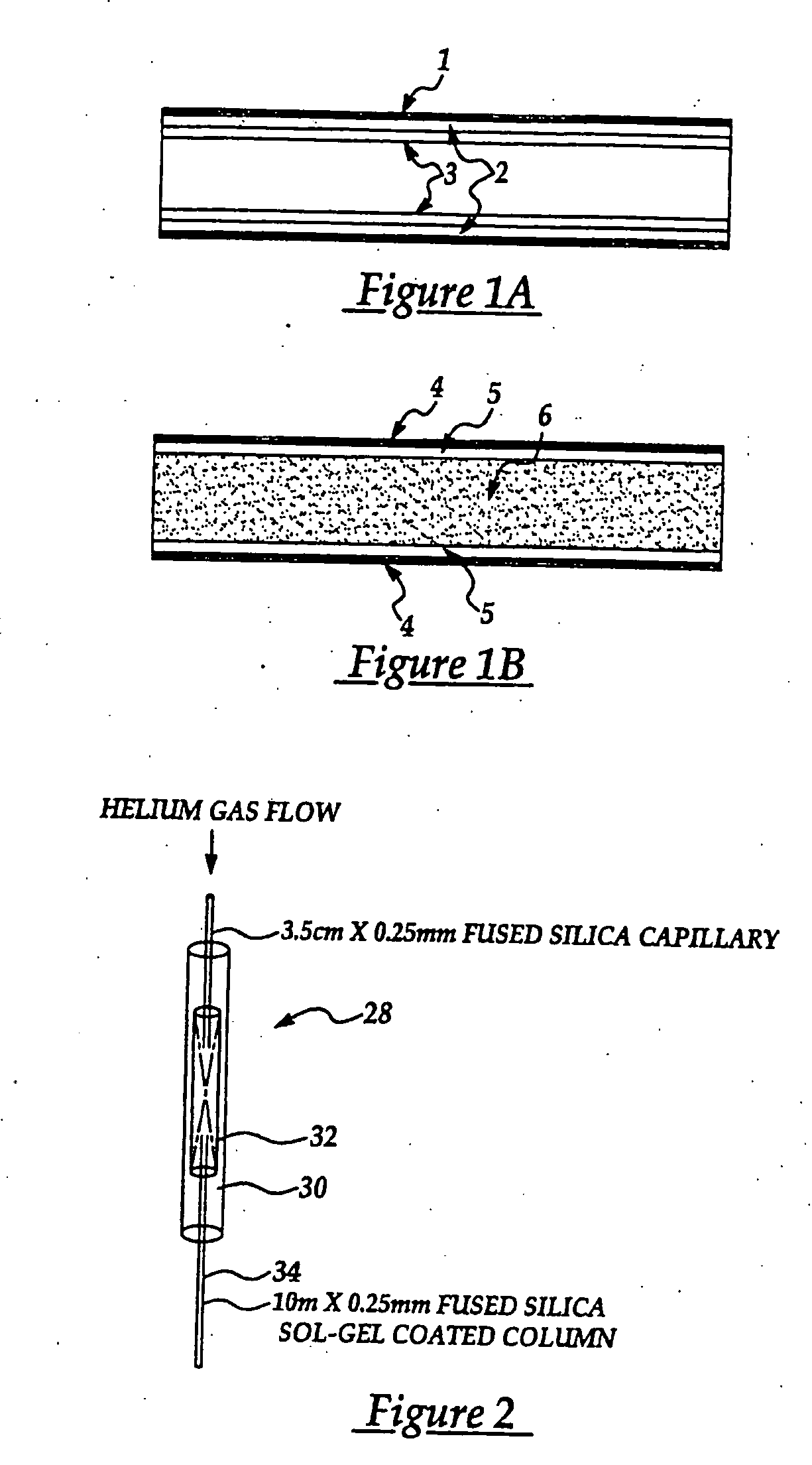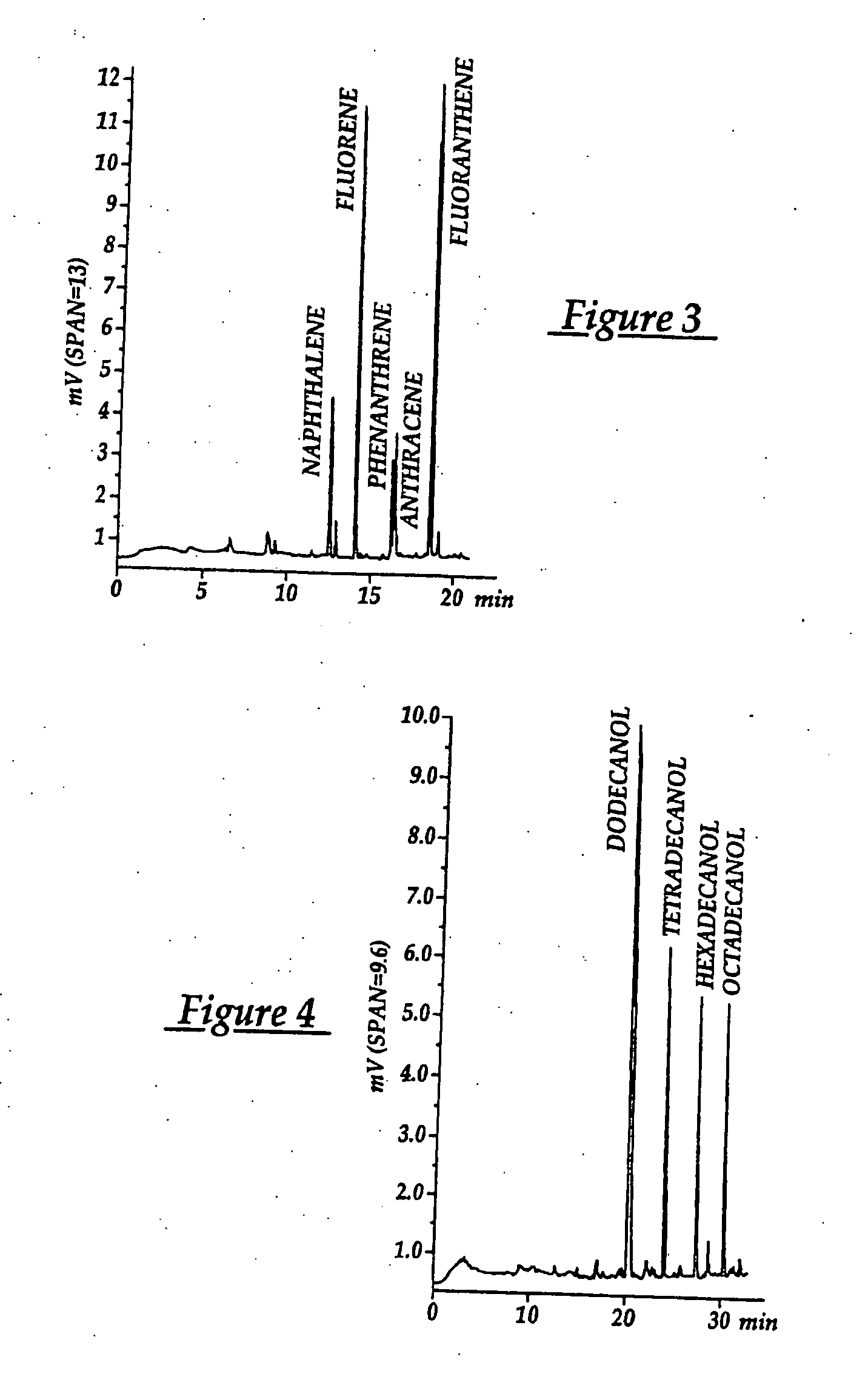Sample pre-concentration tubes with sol-gel surface coatings and/or sol-gel monolithic beds
a sol-gel monolithic bed and surface coating technology, applied in the direction of liquid displacement, separation process, instruments, etc., can solve the problems of complex matrices that may have a detrimental effect on the performance of the analytical system, interfere with the analysis of target analytes, and are not generally suitable for direct introduction into analytical instruments
- Summary
- Abstract
- Description
- Claims
- Application Information
AI Technical Summary
Benefits of technology
Problems solved by technology
Method used
Image
Examples
Embodiment Construction
[0041] Generally, the present invention provides methods and apparatus for pre-concentrating trace analytes. Most generally, the methods involve the step of extracting polar and non-polar analytes through a sol-gel coating or monolithic bed. In a specific embodiment, the sol-gel has the formula:
wherein,
X=Residual of a deactivation reagent (e.g., polymethylhydrosiloxane (PMHS), hexamethyldisilazane (HMDS), etc.);
Y=Sol-gel reaction residual of a sol-gel active organic molecule (e.g., hydroxy terminated molecules including polydimethylsiloxane (PDMS), polymethylphenylsiloxane (PMPS), polydimethyldiphenylsiloxane (PDMDPS), poly(methyl-cyanopropylsiloxane) octadecylsilane, octylsilane, dendrimers, polystyrene, polystyrenedivinylbenzene, polyacrylate, molecularly imprinted polymers, polyethylene glycol (PEG) and related polymers like Carbowax 20M, polyalkylene glycol such as Ucon, macrocyclic molecules like cyclodextrins, crown ethers, calixarenes, alkyl moieties like octadecyl, oc...
PUM
| Property | Measurement | Unit |
|---|---|---|
| internal diameter | aaaaa | aaaaa |
| temperature | aaaaa | aaaaa |
| temperature | aaaaa | aaaaa |
Abstract
Description
Claims
Application Information
 Login to View More
Login to View More - R&D
- Intellectual Property
- Life Sciences
- Materials
- Tech Scout
- Unparalleled Data Quality
- Higher Quality Content
- 60% Fewer Hallucinations
Browse by: Latest US Patents, China's latest patents, Technical Efficacy Thesaurus, Application Domain, Technology Topic, Popular Technical Reports.
© 2025 PatSnap. All rights reserved.Legal|Privacy policy|Modern Slavery Act Transparency Statement|Sitemap|About US| Contact US: help@patsnap.com



